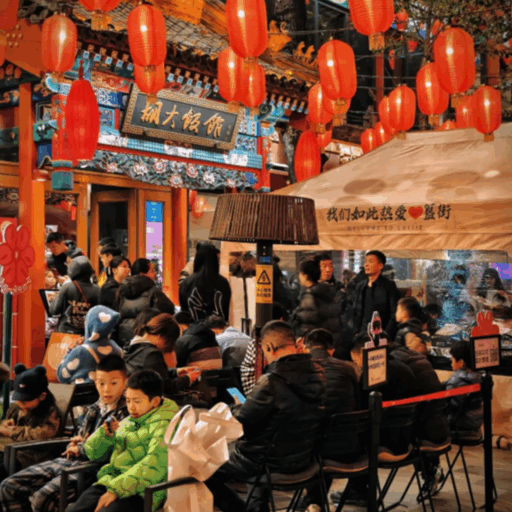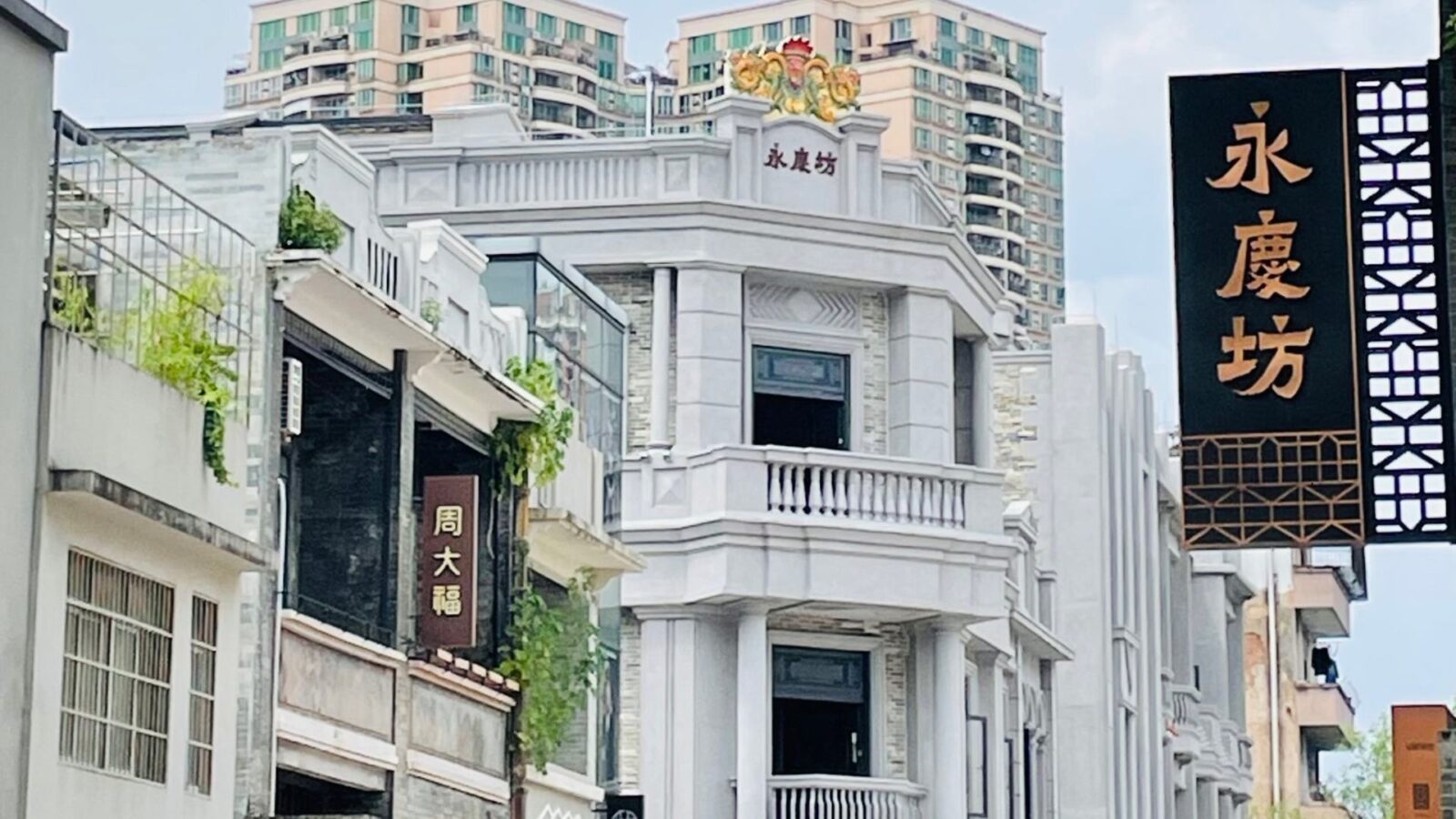Where else can you find incredible street-side dumpling vendors and century-old family-run restaurants serving ancient cuisine that embodies the breathtaking balance of tradition and modernity? Only in Shanghai. It’s a city bursting with culinary diversity. Unfortunately, the abundance of hidden gems and flavors makes Shanghai’s foodie landscape seem incredibly daunting. That’s where UnTour Shanghai comes into play. In this article, we will get you up to speed with the one-of-a-kind Shanghai food tours, which are bound to change the city for you. UnTour has expertly curated these mouth-watering food tours, hoping that each tourist builds a personal and unforgettable connection with this bustling metropolitan city. Buckle up for a new taste exploration—this is a guide you did not know you needed!
What to Expect from an Untour Shanghai Food Tour?
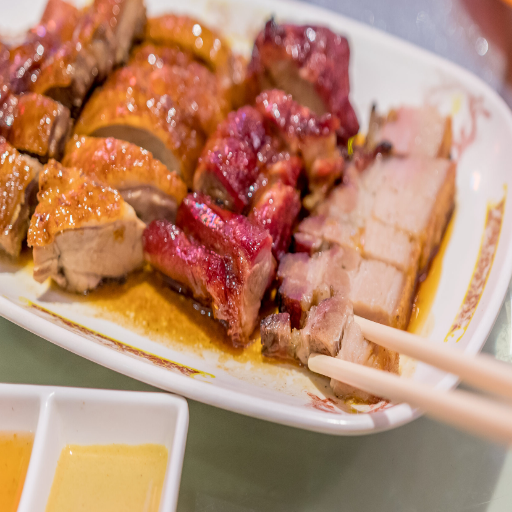
UnTour Shanghai: Overview
Since 2010, UnTour has been an award-winning culinary tour provider, and UnTour Shanghai is no different. They specialize in showcasing the authentic food culture of Shanghai, which owes its culinary heritage to an ever-evolving Chinese cuisine. With UnTour, locals and international visitors have experienced the true essence of Chinese cooking.
At UnTour Shanghai, we enable our guests to savor the multifaceted culinary identity of Shanghai. Our Shanghai food tours feature traditional dim sum breakfasts and lunch street food, as well as late-night noodle joints and busy wet markets, preserving the inescapable history and culture.
UnTour Shanghai is one of the top-rated food tours in the city due to its devotion to authenticity. It is proudly run by a team of well-regarded foodies and experts who focus on small-group tours, which are intimate and cater to specific dietary needs, such as vegetarian and gluten-free options. Whether you're a frequent visitor to Shanghai or a first-timer, UnTour Shanghai will ensure you go on a sensory exploration that results in cherished memories and a full stomach.
A Typical Food Tour In Shanghai
Food tours in Shanghai seamlessly incorporate signature dishes, history, and local culture. The guests are greeted with the hustle and bustle at the morning markets, as well as at Shanghai's breakfast hot spots, where you can find mouthwatering dishes like warm xiaolongbao (soup dumplings) and crunchy jianbing (savory pancakes). After these dishes, the tour continues to traditional neighborhoods, where popular vendors serve Shanghai's braised pork belly accompanied by fragrant scallion oil noodles. The best part is that all these dishes are prepared using age-old techniques.
During the journey, participants can hear captivating tales about the city’s food culture, ranging from the beginnings of its street food traditions to the impact of international cuisine through trade and migration. Some tours also feature a stop at a cultural site, allowing visitors to appreciate Shanghai’s heritage further. These immersive tours usually end in lively night markets or intimate teahouses, where sweet treats or artisanal tea informally cap off the visit to this culinary hub.
What Sets Untour Apart for Food Tours?
An Untour Food Tour has a one-of-a-kind dining experience crafted around the complex layers that form a city’s gastronomic identity. The local guides ensure personalized attention and profound insights that vastly exceed what typical guidebooks or online resources offer. Each tour is customized into small groups. Every single tour stop is carefully planned to include well-known spots as well as local, hidden culinary treasures, which guarantees an unfiltered experience of the region.
Also, Untour is dedicated to sustainable tourism, which allows each tour to support local communities, making a positive contribution to the economy and culture. Their guests enjoy effortless travel through the provision of comprehensive tours that include iconic and lesser-known culinary gems. Untour Food Tours caters to both aspiring and established food enthusiasts, offering a highly informative, well-rounded, and tasty experience that changes one’s perspective of the location. It’s more than just a food tour – it’s a fascinating exploration into the local culture.
What Are the Best Street Eats in Shanghai?
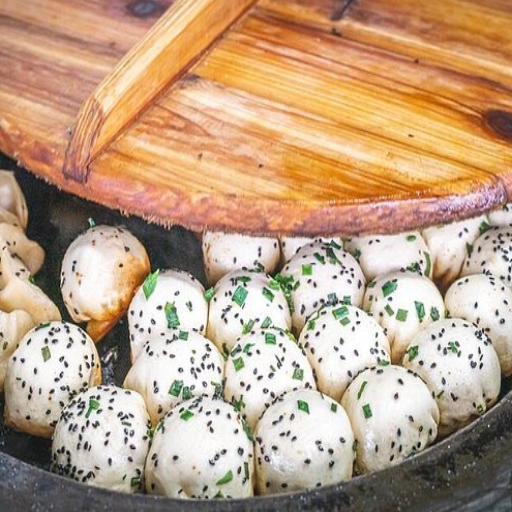
Ca n't-Miss Dumpling Places
The panoramic Shanghai skyline is matched only by its incredible food offerings. Shanghai is famous for its variety of dumplings, including soup dumplings and outrageous Xiao Long Baos, as well as simpler pan-fried dumplings that are perfect for any food lover. The elegant dining places, as well as refined roadside joints, give the dumpling lover an unmatched experience. Here are some of the best:
Din Tai Fung – Sophisticated xiao long bao lovers need not look anywhere else. Famously known for their carefully crafted soup dumplings, the complex Asian flavors blend with a modern dining approach, creating an ambiance that appeals to foodies.
Jia Jia Tang Bao – Known for their mouth-watering, authentic crab roe and steamed pork soup, Jia Jia is a hotspot for locals. The overwhelming local paratha comes with its set of flavorsome dumplings, bursting with crab and mouth-watering pork. Jia Jia claims to use the freshest ingredients, and they do not disappoint.
Yang's Fried Dumplings - Yang’s offers the best sheng jian bao fried dumplings in Shanghai. If you're looking for the perfect combination of Juiciness and crispiness, Yang's is the place.
Fu Chun Xiao Long Bao – The famous and small family-owned place for Xiao Long Bao claims not to use commercial means of creation, and it does taste better than its industrialized competitors. The home-made tenderness of their pork-filled Xiao Long Boa is genuinely one of a kind.
These sites mark the skillful preparation of dumplings, while also serving as windows to one of the most loved traditional foods in Shanghai. If you're walking around town or planning your nearby food spots, don't forget to visit these dumpling places.
Tasty Noodle Options To Consider
Shanghai is quite famous for the diversity of its noodles, as much as it is for ladles of chopstick-style noodle dumplings. While gorging on its hearty mix of spice and texture for the bookish elderly, one often found, therefore, suspended fully drawn shutters. You should try Cong You Ban Mian, also known as Scallion Oil Noodles, as some prefer to call it. It is one of Shanghai's most prized dishes. Tossed in oil steeped with scallions, the noodles are air-scented. Moreover, it's sweet and savory.
Among the hand-pulled noodles are Shanghai-style Red Braised Pork Noodles, a type of pork cut dish I've enjoyed for quite some time now. It's a nourishing statement, but it won't push you to the limit if you happen to indulge too much, unlike the dearly loved Sichuan-spicy take-your-life-back noodles, which are a greasy classic and a must for locals.
For anyone who has preferred Ermitage spring rolls, trademarked for their pungent stamp on California's scorching food, as far as the east coast spectrum melts to its west, these, now calm down, are just blush-prone and not tigers' uneasy to spot Sichuan sesame noodles. The intention here is, as many would guess, to overload with a creamy, blended nut, sesame garlic sauce, mild chili, and a dash of herbs added to the mix.
Finally, the soup noodles with yellow croaker fish underscore the fresh seafood that Shanghai has to offer. The broth has a light yet bold taste, thanks to the ginger and green onion, which gives every sip a refreshing feel. It is also richly flavored by the subtle sweetness of yellow croaker – a perfect combination for ginger and green onion croaker soup, made for grandmothers. Regardless of whether you prefer simplicity or complexity, Shanghai's noodle repertoire is sure to have something that will entice your appetite.
Delving Into The World of Street Food
Shanghai's street food scene is a constantly evolving representation of the city's food culture. Strolling through crowded food stalls or alleyways, it's hard not to notice the mix of tastes ready to be sampled, some drawn from ancient recipes and others inspired by contemporary thought. One of my personal favorites is Sheng Jian Bao – pan-fried soup buns that have a crispy bottom and juicy inside: a delightful mix of textures. Also exciting are congyou bing – scallion pancakes, which are a staple on the streets and have a crispy, flaky exterior but are packed with scallions inside.
Stinky tofu, or Chòu Dòufu, is a local favorite, and we certainly understand why. With a crispy outer layer, it is a bold delicacy. It is for the more adventurous eaters. Street chuan'r skewers require a special mention as well. They combine meat, seafood, and vegetables, which are perfectly grilled and sprinkled with delicious spices. Sweet Tanghulu are candied fruits with a shiny sugar coating served on skewers. They offer the best ending one could imagine.
The food scene in Shanghai is far from being static. New trends blend seamlessly with cherished street foods. Whether you’re a seasoned foodie or someone just taking a stroll in the city, this mosaic of flavors is ideal for everyone. Street food is much more than simply eating. It serves as a core representation of the traditions, social interactions, and bustling life that make Shanghai so lively.
How to Experience the Local Food Scene in Shanghai?
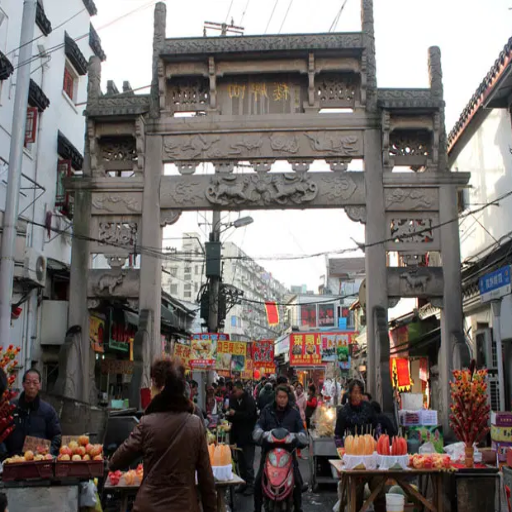
Walking Tours: Discovering Hidden Gems
Walking tours in Shanghai are an engaging way to explore the culture, as they highlight the ever-evolving metropolitan food scene and the vibrant street life. Guided tours often take people into the center of active areas, such as Old Town or the more modern Tianzifang, where streets are lined with food stalls and small restaurants. Each stop offers a special treat, such as well-known soup dumplings (xiaolongbao) or crispy scallion pancakes, along with candied hawthorn. Through food stories, expert guides share stunning details about the ingredients and cooking of each dish, as well as revealing the cultural significance and stories behind these signature foods. This personalized interaction gives participants a closer glimpse of Shanghai's culinary mastery while exploring regional stalls.
Do-it-yourself tours are made very simple with walking tour apps and neighborhood maps. Their self-guided tours allow you to explore at your own pace. You can begin your adventure at Yuyuan Garden Bazaar, where you can find crab-shell pastry and pan-fried pork buns, and travel towards Huanghe Road, where the local specialties like braised pork rice and spicy crawfish can be found. Fuwang duck blood vermicelli soup is a classic dish that visitors can enjoy along the journey. Visitors get a chance to witness the food prep hustle and bustle from fresh bubbling woks to the skillful handiwork of detailed snack creations. Apart from enjoying Shanghai cuisine, walking tours allow tourists to experience the daily life of the locals—it captures the essence of this vibrant city.
Breakfast Tours: The Best Morning Eats
In Shanghai, an exciting breakfast tour awaits you to start your day. The invigorating food scene comes alive in the morning with delicious, fresh, and flavorful dishes. Popular breakfast options like Jianbing or Chinese savory crepes are enjoyed for their intricate blend of flavors and textures, crispy edges, tender fillings, and umami bursts contributed by hoisin sauce and eggs. In addition, steaming hot xiaolongbao are a local favorite. These delicate soup dumplings, filled with pork, are served hot and contain a delicious, aromatic steam.
For those with a sweet tooth, Shanghai's custard buns and red bean paste buns baked in the city are a must-try. Street vendor interactions also provide fascinating stories, which, along with the city's energetic environment, help amplify the tourist experience. In addition, the locals’ favorite You Tiao fried golden dough paired with warm soy milk is a nostalgic staple. These tours provide a deeper understanding of the dishes made by different vendors and allow tourists to gain a greater understanding of the city’s culture.
Food Tasting: Culinary Delights
For food lovers, Shanghai’s culinary scene is a paradise in itself, thanks to the combination of modern and traditional cuisine. Shanghai’s street markets capture the essence of this exquisite blend with mouth-watering aromas of scallion pancakes, pork- or crab-roe-filled dumplings, and freshly steamed stir-fried noodles. The city also boasts world-class restaurants where challenges are given to world-renowned chefs to craft locally inspired, modern dishes, such as foie gras dumplings or truffle-infused xiao long bao.
Traditional teahouses and Michelin-starred restaurants have one thing in common: they both appreciate and value the use of seasonal ingredients, which form the foundation of Shanghai’s food culture. Spring is used as a period of fresh river shrimp and bamboo shoots, which are highlighted, whereas in winter, seasoned hearty and braised pork belly and Hongshao rou are served. Travelers are advised to make use of the abundant time they have when visiting the city to relish in the dynamic culinary identity of Shanghai.
What Makes the Former French Concession Special?
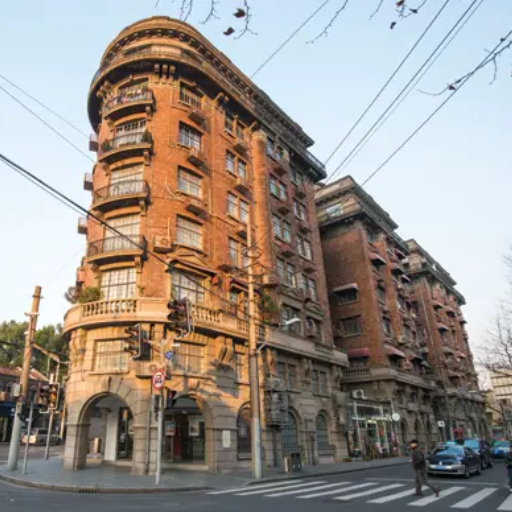
History and Food: A Unique Culinary Journey
The Former French Concession in Shanghai is an area of great historical and culinary importance. It was founded as a French concession in the mid-19th century, France, and is known for its French architecture and European charm. It is home to many beautiful, tree-lined roads, colonial villas, unique cafes, and French-style boutique shops, as well as exceptional cuisine.
Now, the district is famous for both local and Western cuisines. A visitor can delight in enjoying Shanghainese delicacies, such as xiaolongbao, and French pastries, or modern fusion dishes from around the world. There is also the Jiashan Wet Market, also known as Jiashan Market. This market serves the region’s fresh seasonal produce, allowing visitors to experience local life. These things, viewed in the light of history, make the Former French Concession very important for understanding and enjoying Shanghai's culinary heritage.
Legends of Food in the French Concession
With its rich history and modern spirit, the French Concession is home to spectacular culinary masterpieces. A classic croissant must be tasted, and so it is baked in French style using locally sourced butter and flour. The croissant is unparalleled. For those on a journey through history, pan-fried dumplings, known as Sheng Jian Bao, are worth a try. The luxurious dumplings are sold by local boutiques and are crafted using local ingredients.
Foie gras with sweet osmanthus jelly is an example of the perfect balance between French opulence and Chinese traditions. Both fangophone and sinophone will truly appreciate sweet mille-feuille or macarons styled in sumptuous flavors like lychee and passionfruit. The Former French Concession truly nourishes one's mind, body, and spirit by offering a variety of eclectic cuisines all in one place.
Why is the French Concession a Food Lover's Paradise?
What stands out most about the Former French Concession is its unique blend of historical aesthetics and contemporary dining. While walking down the tree-lined streets, one can find heritage buildings that house cafes serving artisanal coffee and traditional Shanghai-style sweets, such as mooncakes or crab shell cakes. This region epitomizes those places where cultural identity is cherished as much as culinary innovation, and everything revolves around dining that strikes a perfect balance between nostalgia and progress. Aside from international influences, the neighborhood proudly boasts classic xiao long bao and hong shao rou, which are Chinese soup dumplings and braised pork belly, respectively, and are surely prepared with a modernization twist to further appeal to a broader audience.
People who want to explore something new will find the French Concession particularly interesting because it has an unmatched variety of international cuisines that blend seamlessly with local flavors. The region features Japanese izakayas located in quiet backstreets as well as Italian trattorias with rustic furnishings. Food markets like Jiashan Market have a lively assortment of organic fruits and vegetables, bakery items, and street food, enabling visitors to experience the dynamically evolving culinary culture of the region in one place. From rustic noodle shops to bistros, all the neighborhood’s dining places make it a point to use fresh, high-quality ingredients so that every meal, no matter how simple, is a delight. All these factors position the Former French Concession as a place not only for gastronomic adventures but also to explore Shanghai's rich heritage and the city’s devotion to fine food.
Are There Any Unique Dinner Tours in Shanghai?

Evening Culinary Experiences: What to Expect
Taking an evening dinner tour in Shanghai made me realize it is not just a meal, but an experience. The tours usually take you through the skyline and broad culinary streets that you may be too shy to try. From the busy food stalls to the ancient restaurants hidden on quiet back roads, Shanghai has time and again offered stunning views that tell many stories. For most people, the best part of these tours is eating local dishes like xiao long bao (soup dumplings) and jianbing (Savory Crepes).
Most people start their evening tours in the city with the help of a professional guide so that they can feel the electric vibe of the city. Some routes include walking down the glimmering Bund or through the classical Old Town. Guided tours have professional guides, and we're lucky to have active ones who love sharing fun stories about the neighborhoods they walk you through. Most of these tours are all-embracing, meaning they cater to all kinds of people. Whether you’re a regular foodie or a stranger to Shanghai, there is something new and exciting waiting to be discovered. The food tour covered vast areas of the city while exploring different cultures, which allowed me to find flavors I had never known existed.
Best Places for a Dinner Tour
The Old City is indeed very colorful and enhances the beauty of the food tour. It has a rich history and a wonderful mix of authentic taste and traditional cuisine. Over the Old City, there are narrow streets where family-owned businesses thrive. In one of these streets, I had the chance to taste shredded noodles and sculpted dumplings that were nothing less than art. Scallion pancakes, accompanied by wontons, were being sold in the beautifully chaotic Old City market. The storytelling, combined with freshly made food, adds to the uniqueness of the atmosphere in the region.
The Bund waterfront district also impressed me as a setting for a dinner cruise tour. This is one of the most recognized waterfront locations, featuring expensive restaurants with skyline views. When I was there, I participated in a tour that included fine dining restaurants and modern fusion cuisine. I came across a culinary scene that was both innovative and traditional, from gourmet dishes served in bite-size, sculpted forms to kaleidoscopic interpretations of Shanghai cuisine. The tour ended with a dessert stop featuring mooncakes with soft, fluffy textures and exquisite flavors like matcha and lavender—an evolution of a classic.
The French Concession also deserves a visit if you want to feel energetic and immerse yourself in life. This quaint district is bursting with vibrant energy from its beautiful bistros to food kiosks. For me, this dinner tour began with Southeast Asian street food, such as crispy fried spring rolls, and culminated in a feast of several dishes served at an apron-style Shanghai eatery. The stunning food was not as impressive as the energy. Most remarkable was the sense that every place you visit has something waiting to be discovered. All of these places are or were brilliant, which is why they are the most prominent landmarks in Shanghai for me.
The Culinary Arts with History and Culture.
It's always been an enriching experience to explore the intersection of dining, history, and culture. Food is usually a convenient way to learn about the past and heritage of a particular area. Take, for instance, Shanghainese cuisine; when I dine on it, I know about China's geography—Shanghai's growth and development are intricately connected to its food. While the city was a trade center, its culinary identity was shaped by both locals and international tourists, and it is now a melting pot of flavors. Each bite revealed pieces of stories about the people who made it and the history behind each dish.
In addition to the food, the atmosphere also helps transcend cultural boundaries. There is something particularly extraordinary about dining in restored heritage buildings, where cuisine is served alongside centuries-old architecture. The environment feels like a time machine where you can glimpse the lives of bygone eras. Such meals have been narratively satisfying and delicious for me. In other words, an enhanced appreciation for the culture and the uniqueness of the place is acquired after the meal. The blend of dining alongside historical and cultural elements turns every meal into a fascinating odyssey.
Frequently Asked Questions (FAQs)
Q: What can I expect from the street eats breakfast tour in Shanghai?
A: The Street Eats Breakfast Tour is a culinary tour of Shanghai’s vibrant street food scene, featuring popular local dishes like jianbing and wontons. A bilingual foodie guide tells you more about Shanghai’s cuisine and its food culture.
Q: How does a tour with Untour differ from other culinary tours?
A tour with Untour helps you eat like the locals by showing you where the real food places are hidden in Shanghai. Emphasis on personal contacts with the food vendors and under-the-surface knowledge about the city and food history are what distinguish these tours from others.
Q: Does Untour offer other private tour options in Shanghai?
A: Definitely. With Untour, you can book a private tour, which is helpful when you want a unique experience tailored to your specific culinary needs and preferences while traveling around Shanghai.
Q: What is a wet market, and why should I visit one in Shanghai?
A Wet market is a type of marketplace that specializes in halal goods, such as fresh seafood, produce, meat, and poultry. A wet market in Shanghai is of great value as it not only gives you a taste of everyday life but also allows you to see the fresh produce that is an essential part of the cuisine.
Q: Can I join a culinary tour if I am flying to Shanghai tomorrow?
A: The Untour website allows you to book tours a day in advance. You can join a culinary tour even if you're flying to Shanghai tomorrow, as long as you register in advance on their website.
Q: What types of street food can I expect to try on the Shanghai night tours?
During Shanghai night tours, tourists get to sample a reasonable selection of street food, which includes spicy Shanghai dishes flavored with chili oil and many other unique regional dishes.
Q: Is there a specific focus on local ingredients during the tours?
A: Absolutely! There is a significant focus on local ingredients and traditional cooking methods in Shanghai Tours. You will appreciate the importance of fresh produce and spices used in regional dishes.
Q: What makes the hole-in-the-wall eateries worth visiting in Shanghai?
A: Locals know that hole-in-the-wall eateries are one of the best places to go for authentic flavors. These hidden gems show a lot about local culinary culture and are usually where you can have traditional dishes expertly prepared.

